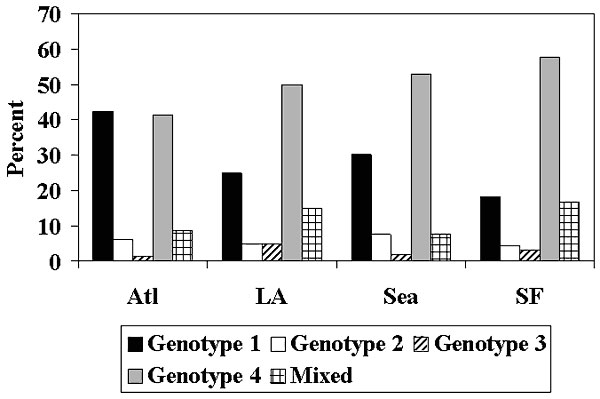Volume 6, Number 3—June 2000
Research
Genetic Variation in Pneumocystis carinii Isolates from Different Geographic Regions: Implications for Transmission
Figure 2

Figure 2. Distribution of Pneumocystis carinii DHPS genotypes by city (Fisher's exact test, p=.049). Atlanta, n=80; Los Angeles, n=20; Seattle, n=53; San Francisco, n=66.
Page created: December 16, 2010
Page updated: December 16, 2010
Page reviewed: December 16, 2010
The conclusions, findings, and opinions expressed by authors contributing to this journal do not necessarily reflect the official position of the U.S. Department of Health and Human Services, the Public Health Service, the Centers for Disease Control and Prevention, or the authors' affiliated institutions. Use of trade names is for identification only and does not imply endorsement by any of the groups named above.